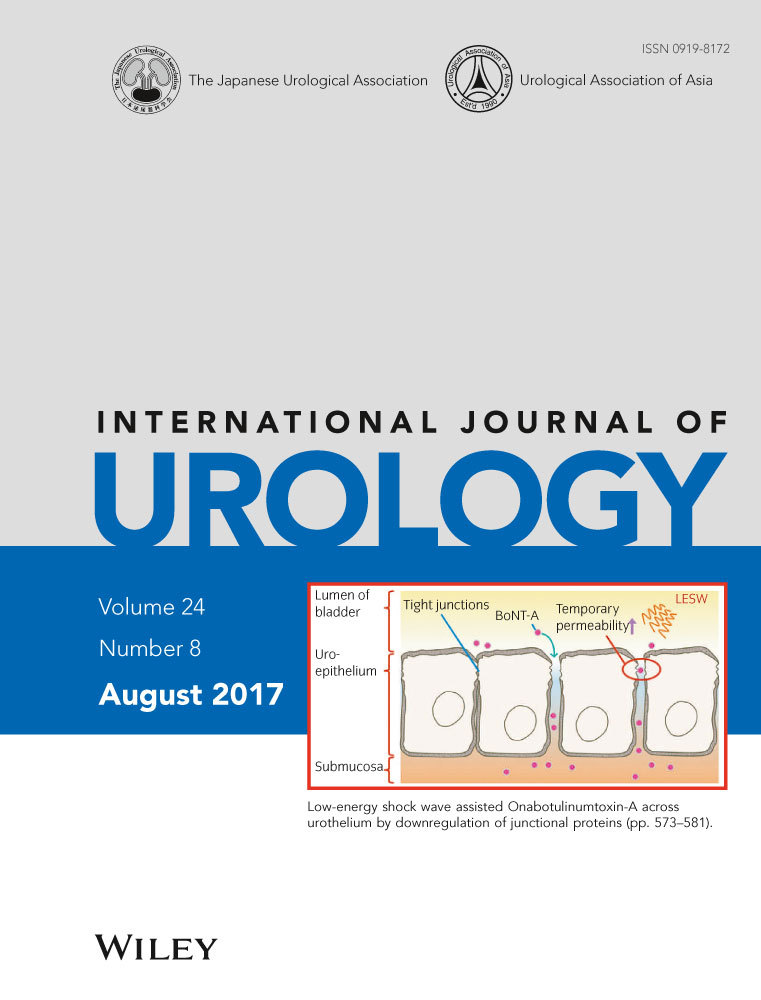Expression profile of urothelial transcription factors in bladder biopsies with interstitial cystitis
Abstract
Objectives
To characterize interstitial cystitis pathology based on the expression profile of urothelial tissue-specific master transcription factors.
Methods
Bladder carcinoma cell lines derived from the urothelial stem cells (epithelial or mesenchymal) were used to identify candidate urothelial master transcription factors. Gene expression was measured with quantitative reverse transcription polymerase chain reaction. From the initial screening of 170 transcription factors (human homologs of Drosophila segmentation genes and known master transcription factors from a database), 28 transcription factors were selected. Subsequently, messenger ribonucleic acid from bladder biopsies of interstitial cystitis patients was purified, and gene expression levels of known urothelial marker genes and candidate master transcription factors were measured. Multivariate expression data were analyzed with spss software.
Results
Factor analysis decomposed the expression profile into four axes: principal axis 1 included retinoic acid receptors and 17 candidate master transcription factors. Principal axis 2 included KRT5 and five candidates. Principal axis 3 included transcription factor TP63 and two candidates. Principal axis 4 included SHH and two candidates. Principal component analysis segregated biopsies from Hunner's lesion in the principal component 1 (retinoic acid)/principal component 2 (SOX13)/principal component 3 (TP63) space.
Conclusions
Urothelial master transcription factors could serve as novel diagnostic markers and potentially explain the molecular pathology of interstitial cystitis.




